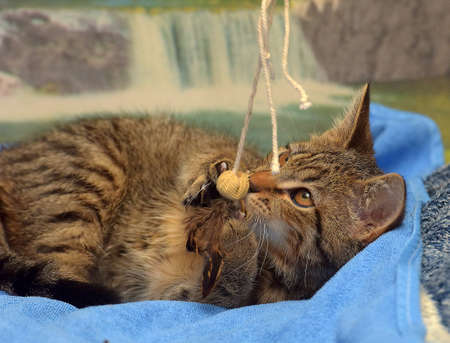Understanding Why Hydration Matters for Cats
When it comes to your cat’s health, hydration is often overlooked but absolutely essential. Unlike dogs, cats have evolved from desert-dwelling ancestors and naturally have a low thirst drive. This means they may not always drink enough water on their own, making them more susceptible to dehydration. Proper hydration supports vital bodily functions—everything from digestion and nutrient absorption to kidney function and temperature regulation. Without enough water, your cat could face issues like urinary tract infections, kidney stones, or even chronic kidney disease. As a pet parent, it’s important to recognize the early signs of dehydration, which can include lethargy, dry gums, sunken eyes, decreased skin elasticity, and a noticeable drop in appetite. By understanding why hydration matters and knowing what to watch for, you’re better equipped to support your feline friend’s overall well-being.
2. Common Obstacles: Why Cats Don’t Drink Enough Water
Understanding why your cat might not be drinking enough water starts with a look at their natural instincts and quirky behaviors. Unlike dogs, cats evolved as desert animals, which means their bodies are built to get moisture primarily from their food—think wild prey, not water bowls. This evolutionary trait often results in domestic cats having a naturally low thirst drive, especially if theyre eating mostly dry kibble.
Feline Behavioral Quirks
Cats are notorious for being picky about almost everything—including their water source. Some prefer running water over still, while others might avoid a bowl placed too close to their food or litter box. Even the material of the bowl (plastic vs. ceramic vs. stainless steel) can influence how much they drink.
Common Behavioral Barriers
| Behavioral Quirk | Impact on Water Consumption |
|---|---|
| Preference for Moving Water | Might ignore stagnant water in bowls |
| Sensitivity to Bowl Placement | Avoids water near food/litter box due to instinctual cleanliness |
| Picky About Bowl Material/Smell | Refuses to drink if bowl smells odd or retains flavors |
| Dislikes Deep or Narrow Bowls | Whisker fatigue discourages drinking from certain shapes/sizes |
Environmental Factors
The home environment can also affect hydration habits. Stale or infrequently changed water is unappealing to most cats. Temperature plays a role too—some may shy away from water thats too cold or warm. Additionally, homes with multiple pets can create competition or stress that makes a cat reluctant to approach shared bowls.
Key Takeaway:
Your cat’s ancestry, personal quirks, and even subtle environmental details all add up, making it essential to observe and adapt your approach when encouraging better hydration.
![]()
3. Tips for Making Water Appealing to Cats
Encouraging your cat to drink more water often comes down to design and habit. By thoughtfully shaping their environment, you can make hydration a natural part of their daily routine. Here are practical strategies tailored for American households:
Bowl Placement Matters
Cats are creatures of comfort and curiosity. Try placing water bowls in several quiet, low-traffic locations throughout your home, away from food bowls and litter boxes. This mimics the instinctual behavior of seeking out separate sources for eating and drinking, which can make cats more inclined to sip regularly.
Choose the Right Bowl
Material can affect your cats willingness to drink. Many American pet owners find that ceramic or stainless steel bowls are preferable over plastic, as they don’t retain odors or tastes. Wide, shallow bowls also help prevent whisker fatigue—a common feline aversion caused by narrow dishes brushing against sensitive whiskers.
Keep It Fresh and Clean
Cats have an acute sense of smell and taste; stale water is a dealbreaker for most felines. Make it a habit to change the water at least once a day and wash the bowl frequently with mild soap and hot water. Consider filtered water if your tap has a strong chemical taste or odor.
Experiment with Water Types
Some cats prefer running water, associating it with freshness. Investing in a pet fountain not only adds a modern touch to your home’s design but also entices cats through movement and sound. If your cat isn’t interested in fountains, try offering room-temperature or slightly chilled water to see what they like best.
Add Variety—But Do It Safely
If your cat still resists drinking, add a splash of tuna juice (in water, not oil) or low-sodium chicken broth to their bowl occasionally for extra flavor. Always ensure additives are safe and consult your vet before making regular changes.
By observing your cat’s preferences and tweaking their environment accordingly, you’ll build healthy hydration habits that support their wellbeing—one sip at a time.
4. Water Bowls vs. Fountains: Choosing What Works Best
When it comes to keeping your cat hydrated, the type of water dispenser you choose can make a surprising difference. Both traditional water bowls and pet water fountains have their unique benefits and drawbacks, and understanding these can help you match the best option to your cat’s personality and habits.
Traditional Water Bowls
Classic water bowls are simple, affordable, and easy to clean. They work well for cats who aren’t finicky about water freshness or who may be easily startled by new gadgets. However, stagnant water can quickly accumulate dust and debris, making it less appealing for picky drinkers.
Pet Water Fountains
Water fountains provide a constant flow, keeping the water fresh and more enticing—especially for curious or playful cats. The movement can encourage drinking by triggering a cat’s instinctual interest in running water. However, fountains require regular cleaning and filter changes to prevent build-up, which might not be ideal for every household.
Comparing Bowls and Fountains
| Feature | Traditional Bowl | Water Fountain |
|---|---|---|
| Freshness | Stagnant, needs frequent refills | Constantly moving, stays fresher longer |
| Maintenance | Simple to clean | Requires disassembly & filter change |
| Noise Level | Silent | Pump may hum or splash softly |
| Cost | Low initial cost | Higher upfront + filter replacements |
| Cat Personality Fit | Cautious, routine-loving cats | Curious, playful, or easily bored cats |
Suggestions Based on Cat Personalities:
- The Shy or Senior Cat: Stick with a stable ceramic or stainless steel bowl placed away from busy areas. These cats value predictability and quiet.
- The Playful Explorer: A fountain may keep them engaged and drinking more frequently. Look for models with adjustable flow to suit your cat’s curiosity.
- The Picky Drinker: Try both! Some cats prefer variety—rotate between a fresh bowl and a small fountain to see what sparks their interest.
- The Busy Household Cat: If you’re gone often, a fountain ensures fresh water is always available even if you miss a refill.
Selecting the right hydration solution is all about observing your cat’s habits and preferences. Whether you opt for a classic bowl or an interactive fountain, the goal is always the same: making fresh water accessible—and attractive—for your feline friend.
5. Wet vs. Dry Food: The Role of Diet in Hydration
When it comes to your cat’s hydration, what you put in their bowl matters just as much as what’s in their water dish. In the U.S., pet owners often choose between wet (canned) food and dry kibble, but few realize how dramatically these choices impact a cat’s daily water intake. Wet food is made up of about 70-80% moisture, which means every bite delivers hydration directly into your cat’s system. On the other hand, dry food contains only around 10% moisture, so cats who eat mainly kibble need to drink more water separately to stay hydrated.
Understanding Feline Drinking Habits
Cats naturally have a low thirst drive because their ancestors evolved in arid climates. This means they’re not always great at seeking out water bowls, especially if their diet doesn’t provide enough moisture. American pet parents who feed primarily dry food should be extra vigilant about encouraging drinking—think multiple water bowls, fountains, or even adding ice cubes for enrichment.
Balancing Nutrition and Hydration
While dry food offers convenience and dental benefits, it’s important to balance your cat’s nutritional needs with their hydration requirements. Many vets in the U.S. recommend incorporating at least some wet food into your cat’s daily meals to help offset the lower water content of kibble. Mixing wet and dry food, or rotating between the two, can make a significant difference in overall hydration.
Key Takeaways for American Cat Owners
If you’re caring for a cat in America, consider how climate, home environment (like air conditioning), and activity level affect your pet’s hydration needs. Pay attention to signs of dehydration—such as lethargy or reduced skin elasticity—and tailor your feeding routine accordingly. Ultimately, choosing the right mix of wet and dry food isn’t just about taste; it’s a proactive way to support your cat’s lifelong health by keeping them well-hydrated every day.
6. Monitoring Your Cat’s Hydration at Home
Keeping tabs on your cat’s hydration is a practical and essential habit for every pet parent. Daily observation is key—watch for subtle changes in behavior like less frequent urination, dry gums, lethargy, or decreased appetite, as these can be early signs of dehydration. It’s also helpful to track your cat’s water intake.
Simple Ways to Track Water Intake
Use a measuring cup to fill your cat’s water bowl each day and note how much is left after 24 hours. For multi-cat households, consider using separate bowls or even investing in smart fountains that track individual drinking patterns. If your cat prefers running water, monitor the level in their fountain and refill as needed.
Signs Your Cat May Not Be Drinking Enough
Be alert if you notice sunken eyes, dry or sticky gums, poor skin elasticity (gently pinch the skin between the shoulders—it should snap back quickly), or overall weakness. These are red flags that shouldn’t be ignored.
When to Call Your Veterinarian
If your cat hasn’t drunk water for more than 24 hours, shows signs of dehydration, or suddenly changes their drinking habits, it’s time to consult your vet. Early intervention is crucial since dehydration can quickly lead to serious health issues in cats. By making daily monitoring a routine part of your care, you’ll help ensure your feline friend stays happy, healthy, and hydrated.


